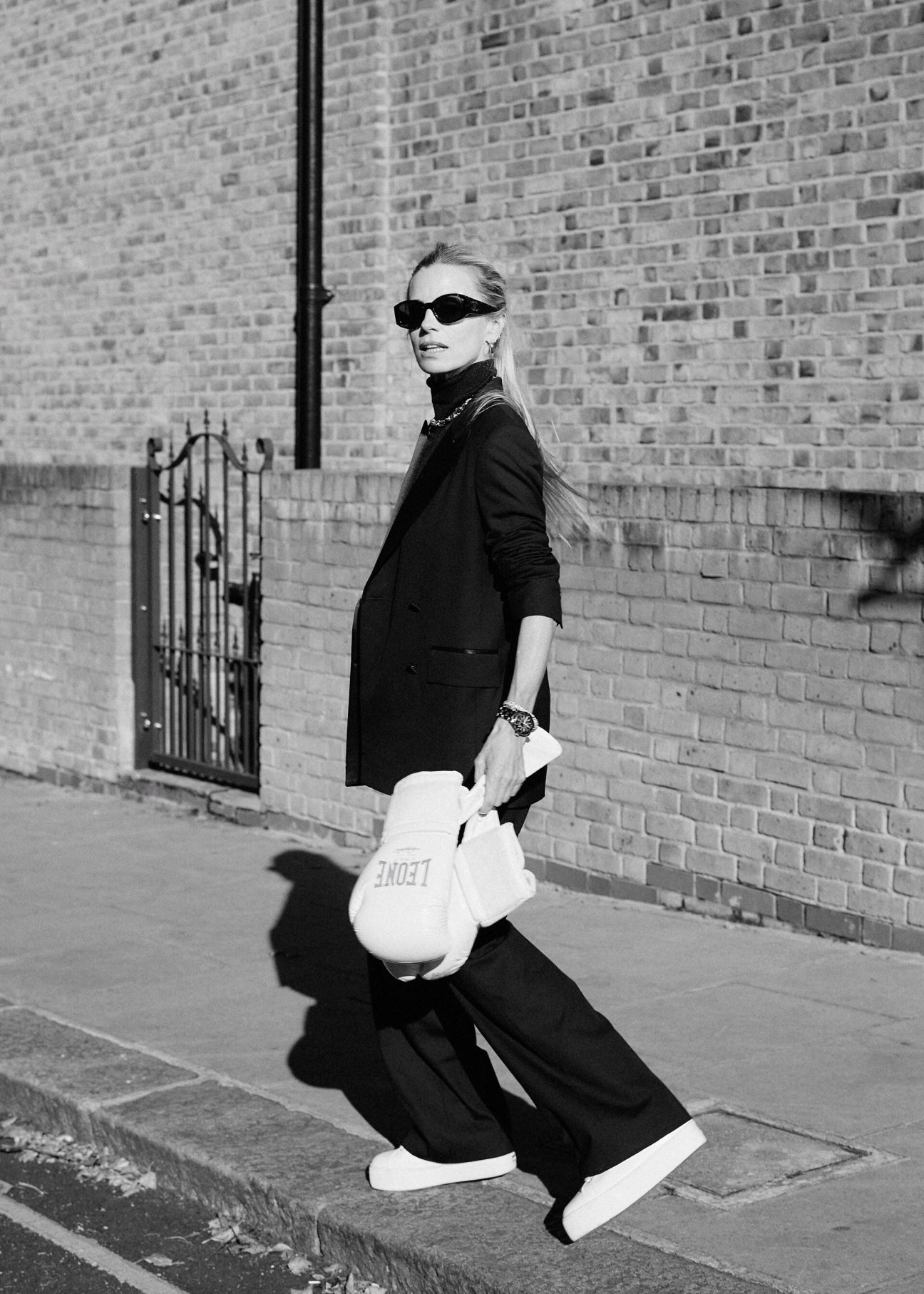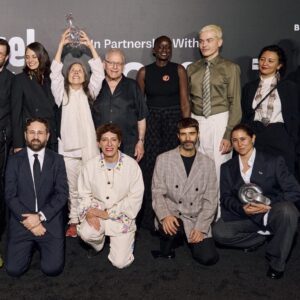
If you don't know her well, it’s hard to imagine that Laura Bailey ever had a tomboy phase. "I was sport mad," she recalls, noting that her running shoes were her most prized sartorial possession. Nevertheless, those years instilled a reverence for a wardrobe defined by simplicity and function: "I was a cross-country runner, so the kit was really important to me from a young age," adds the model, photographer, and British Vogue contributing editor.
Due to a lively career in fashion, Bailey ultimately broadened her horizons beyond Nike tracksuits. She is a disciple of good tailoring and long-lasting heritage pieces. "Now, I know when I feel my best—in sporty layers with a feminine, boyish twist. I love a man's suit on a woman. I treasure my Chanel," she says from her London home. Indeed, contradiction is a core tenet of Bailey's dressing philosophy: classic Levi’s paired with delicate jewelry, a suit and tie coupled with a smokey eye and tousled hair. Indeed, when it comes to packing for a getaway, Bailey often contrasts practicality with pleasure: "It should feel like a present to yourself when you open your suitcase in a new place. Why not wear something crazy and precious?"
Bailey spent this fashion week running from show to show across London, with particular attention paid to U.K. designers Simone Rocha and Molly Goddard, and attending BAFTA events. The city, she reports, is thrumming with a rebellious spirit this week. Between presentations, while her fellow show-goers flocked to the likes of the historic NoMad Hotel in Covent Garden for afternoon tea—a recently launched menu featuring a delectable assortment of elegantly appointed finger sandwiches, sweets, and some signature tea-inspired cocktails—Bailey took a moment to sit down with CULTURED for a conversation about the ways that her home city's unique disposition has shaped her approach to fashion.
How did you dress as a teenager?
I was sport-mad. The piece of clothing that I cared most about was my running spikes. I saved up for them, took really good care of them. I was a cross-country runner, so the kit was important to me from a young age. I was drawn to the uniform aspect of sport, the sense of being in a team. I also really loved my school uniform. We were all really creative and naughty with them—the shortest skirt, the most deconstructed tie. We wore oversized men's trench coats from charity shops over them. I saw this gang of girls on the street yesterday. They were all shapes and sizes—one had a mini skirt, one big baggy jeans—but they all wore identical black puffer coats. It's that tribal feeling, but also completely original.
When did you develop a sense of your own style?
I found my sense of style by having to form an identity on very little money. I've been through many phases. In my 20s, I was experimenting with a more feminine version of myself. I was also modeling all the time, so I was somebody different, every day. I loved the chameleon side of it, but as I've gotten older, I've returned to simple codes and uniforms. My life is also very active, so there's very little that's precious. I need to be able to ride my bike and walk the dogs. Now, I know when I feel my best—in sporty layers with a feminine, boyish twist. I love a man's suit on a woman. I treasure my Chanel.

Can you describe the state of your closet in a few words?
In flux, if you will. I'm in this ruthless editing phase of life. Yet my closet, I can't lie, is overflowing…So that brings great shame. There's no doubt I have more than I ever need, but if I'm in a good mood, it can also be really inspiring. I love rediscovering things, or when my daughter borrows something.
Is there a particular garment that has a special place in your heart?
My little black Chanel jacket is my most precious thing. It's also something I wear a lot. I love the idea of not saving things for this mythical "special occasion." I'm not overly emotional about clothes. In terms of treasured things, it's all vintage Chanel and jewelry, and then, like, scruffy old vintage tees that remind me of a trip to Jamaica or something.
How do you pack for a trip?
I used to be really puritanical about packing: one pair of denim shorts, a white T-shirt. It should feel like a present to yourself when you open your suitcase in a new place. Why not wear something crazy and precious?

Laura Bailey's Rules to Live By:
1. Always take a chance to make someone’s day. A compliment, a lucky break, or simply mentioning someone’s name in the context of love or work can be life-changing. I’ll always be grateful to those who look out for me, and try to pass it forward.
2. Always make friends of all ages. Show up for your kids, and your friends’s kids, in meaningful ways.
3. Always try to treat time out with the same respect applied to a deadline or shoot. It’s a luxury, but a girlfriend taught me a concept of sacred lines in a diary—time saved for my kids, a tennis match, or simply an afternoon of reading or hiking with my dogs. If I don’t mark it and prioritise, my diary can spiral and so do I. I also steal Friday afternoons for tennis when I can. Less is more.
4. Always pack for joy, not practical minimalism. I used to save up my favorite things for imaginary occasions, but the time is now. I love a cool capsule edit (Eres swimwear, a little black dress, cutoffs, and a vintage tee) but a trip, for work and pleasure, is a chance to wear something precious or flamboyant: a vintage kimono, silk pajamas, a bejeweled headband, or striped Good Squish scrunchie. Or diamonds! Anything that feels like a treasure to unpack! Climbing Kilimanjaro, even lacy thermal layers and a vintage scarf on my hair felt precious.
5. Never close your heart to the new, to adventure.
6. Never underestimate the power of solitude. Time alone is crucial for me to recharge and to be able to connect with friends and family, work, and community with energy and commitment. I try to take the occasional solo trip or add an extra night to a location shoot just to rest and reset.
7. Never forget that everyone is battling secret struggles. Show up wholeheartedly and check in with empathy. If you don’t have solutions, listening is just fine.










 in your life?
in your life?

